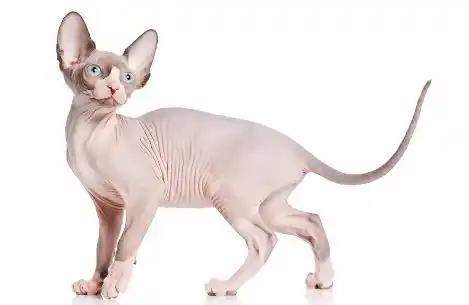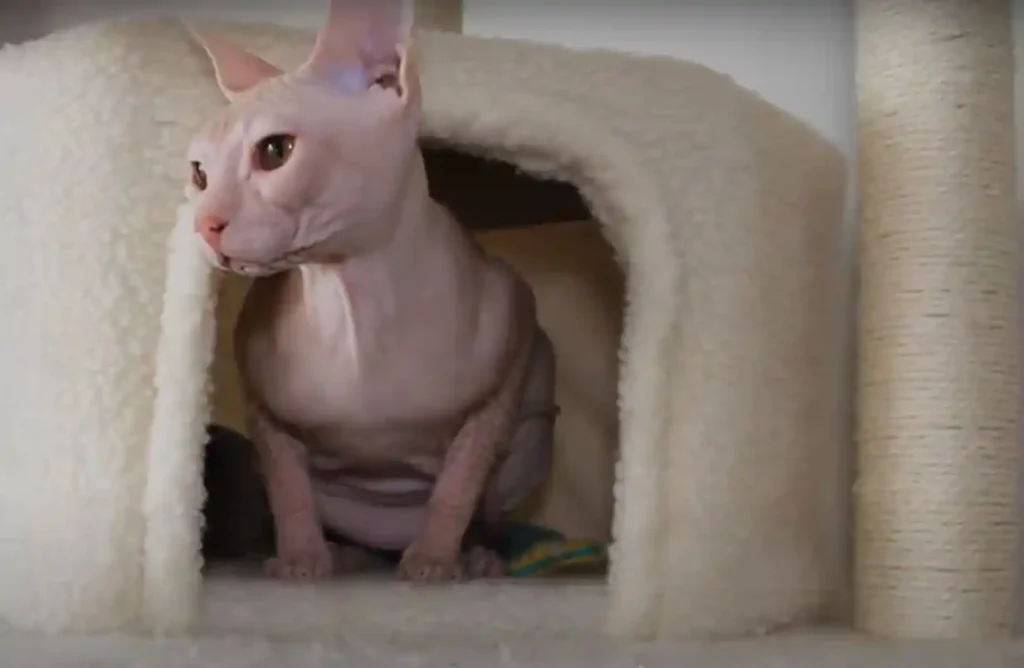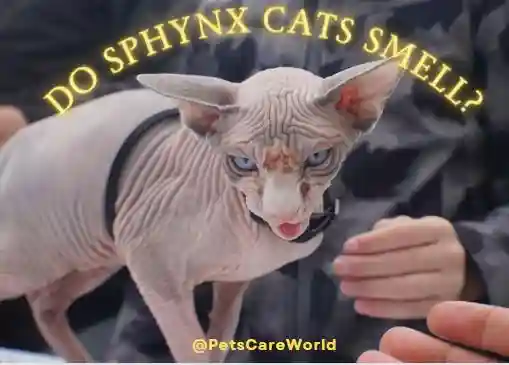Hairless cats, such as the Sphynx breed, are known for their lack of fur and wrinkled skin. But do they sweat like humans do? The answer is yes, but not in the same way or in the same places. Here is what you need to know about why do hairless cats sweat.
How do cats sweat? Do hairless cats sweat?

Cats have two types of sweat glands: eccrine and apocrine. Eccrine sweat glands are responsible for producing watery sweat that helps cool the body through evaporation. Apocrine sweat glands are associated with hair follicles and produce oily sweat that contains pheromones, which are chemical signals that convey information to other animals.
Do cats sweat through their paws?
Unlike humans, who have eccrine sweat glands all over their skin, cats have them only in a few relatively hairless areas, such as their paw pads, nose, lips, chin, and the skin around the anus. These areas have a small surface area, so the amount of sweat that cats produce is minimal. However, the evaporation of sweat still has a cooling effect on cats, keeping their body temperature between 100 and 102.5 degrees Fahrenheit.
Hairless cats have the same distribution of sweat glands as other cats, but they may sweat more because they lack the insulating layer of fur that helps regulate their body temperature. They may also leave behind more visible sweat marks on surfaces, such as sweaty paw prints, because they have less hair to absorb the moisture.
Why do hairless cats sweat?
Cats sweat mainly for thermoregulation, which means maintaining a stable body temperature. Cats are warm-blooded animals, which means they generate their heat through metabolism. However, if the external temperature is too high or if they are exercising, they may need to lose some heat to avoid overheating. Sweating is one of the ways that cats can do this, along with panting, grooming, and seeking shade or cool places.

Cats may also sweat when they are stressed, anxious, or fearful. This is because stress activates the sympathetic nervous system, which prepares the body for fight or flight. This increases the heart rate, blood pressure, and breathing, which in turn raises the body temperature. Sweating helps to lower the body temperature and also releases pheromones that may signal the cat’s emotional state to other cats or humans.
Do Sphynx cats smell?

No, Sphynx cats do not inherently smell more than other cats. They often have less body odor because they lack the fur that can trap oils and odors. However, like any other pet, maintaining good hygiene is essential. Regular bathing to remove natural oils and debris is necessary, but over-bathing can lead to skin issues, so finding the right balance is crucial. Additionally, cleaning their ears and teeth, as well as providing a clean environment, contributes to keeping any cat, including Sphynx cats, smelling fresh and clean.
Signs Your Cat is Too Hot
- Panting: If your cat is panting excessively, it might be a sign of overheating. Unlike dogs, cats don’t normally pant much, so this behavior can indicate they’re trying to cool down.
- Restlessness: If your cat seems unusually restless or is constantly moving around without settling down, it could be because they’re uncomfortable due to heat.
- Lethargy: On the flip side, extreme heat can also make cats lethargic. If your usually active cat is suddenly very sluggish, it might be too hot for them.
- Seeking Cool Spots: If your cat is actively searching for cool places, such as lying on cool tiles or seeking out shade, they might be feeling the heat.
- Excessive Grooming: Cats groom themselves to cool down. If your cat is grooming excessively, it could be their way of trying to regulate their body temperature.
- Hot Ears and Paws: Touch your cat’s ears and paws. If they feel unusually warm, it could indicate they’re overheated.
- Heavy Breathing: Rapid or heavy breathing can be a sign of heat stress in cats. If your cat’s breathing seems labored, it’s time to cool them down.
Conclusion
Hairless cats sweat, but not in the same way or in the same places as humans do. They have sweat glands only in a few relatively hairless areas of their body, such as their paw pads, nose, lips, chin, and the skin around the anus. They sweat mainly for thermoregulation, which means keeping their body temperature stable, and also for communication, which means sending chemical signals to other animals.
Hairless cats may sweat more than other cats because they lack the insulating layer of fur that helps regulate their body temperature. They may also leave behind more visible sweat marks on surfaces, such as sweaty paw prints, because they have less hair to absorb the moisture.
Disclaimer
“As an Amazon Associate, we earn from qualifying purchases where there is no additional cost to you. This is one way to support us.” The products displayed here are well-researched, highly rated by users, and fast-moving.







Leave a Comment
You must be logged in to post a comment.